canonization
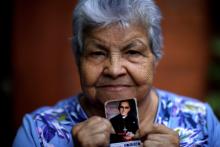
A photo essay from the canonization of Saint Oscar Romero in Vatican City, and of how the faithful in San Salvador prepared in the weeks before.
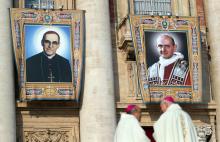
Both Romero, who was shot by a right-wing death squad while saying Mass in 1980, and Paul, who guided the Church through the conclusion of the modernizing 1962-65 Second Vatican Council, were contested figures within and without the Church.
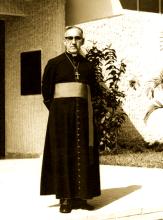
Editor’s Note: This article originally appeared in a 2005 issue of Sojourners magazine.
"El Papa Juan Pablo Segundo Murió" read the banner shown on the TV set in the El Salvador bar I was sitting in April 2, 2005. The pope's death had been rumored all week. One taxi driver told me the pope was dead, though the next one informed me he was not.

What is Star Wars? For the first decade or so after George Lucas made what would come to be known as Episode IV, which celebrates its 40th anniversary this year, the answer to that question was easy: Star Wars was whatever Lucas said it was.

Pope Francis made one of the most significant changes in centuries to the Roman Catholic Church's saint-making procedures on Tuesday, adding a new category for people who give their lives to save others.
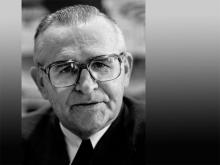
Brazilian Cardinal Paulo Evaristo Arns, one of the most important figures in modern Brazil, died on Dec. 14 in Sao Paulo. He was 95.
Known as Dom Paulo, he was appointed bishop in 1966 and served as archbishop of the Sao Paulo Archdiocese from 1970 to 1998. But he was better known as the “people’s bishop,” and embodied the progressive church movement in South America.

A sign that hung in the volunteer room at Shanti Dan quoted Mother Teresa, reading, “I pray each one of you to be holy and so spread [God’s] love everywhere you go. Light [God’s] light of truth in every person’s life so that God can continue loving the world through you and me.”
This was not just a commission for those serving in Kolkata. Poverty, violence, hatred, sadness, hopelessness, crime, greed, darkness, jealousy exist in our homes across the world. And Mother Teresa was known for encouraging people to serve their neighbors in their hometowns or wherever they are called, striving to love each person as God loved us.
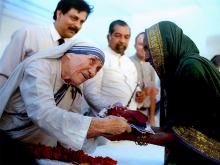
The Rev. James Martin is a Jesuit priest and popular author who wrote about his lifelong fascination with the saints and the many aspects of sainthood in the Catholic tradition in the best-selling book My Life With the Saints.
Loyola Press is issuing a 10th anniversary edition of Martin’s memoir in September, which also coincides with the Sept. 4 canonization of Mother Teresa of Calcutta, who even during her lifetime – she died in 1997 – was regarded by millions as a “living saint” for her work with the destitute in India and around the world.
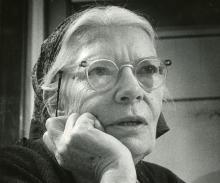
The famous Catholic Worker activist Dorothy Day once remarked, “Don’t call me a saint. I don’t want to be dismissed that easily.” That hasn’t stopped the Archdiocese of New York, however, from moving forward with a “canonical inquiry,” the next step required to become eligible for beatification and then canonization, when a figure officially becomes a saint.
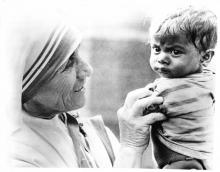
Mother Teresa of Calcutta will be made a saint on Sept. 4. Pope Francis made the announcement on March 15 during a meeting with Catholic cardinals, which also saw four others approved for sainthood this year.

Pope Francis has approved new rules to tighten financial oversight of the canonization process after leaked documents revealed abuses and high costs in creating saints. The new measures focus on how the Holy See handles applications for sainthood, which can be a lengthy and expensive process that involves examining claims made by supporters of a would-be saint.
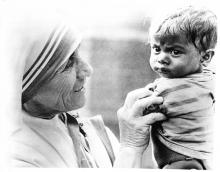
Pope Francis has given final clearance for Mother Teresa — called “the saint of the gutters” for her work with the poor in India — to become an official saint, a move welcomed by the archbishop of Calcutta as “a real Christmas gift” from the pontiff.
Francis took the step by signing a decree declaring that the inexplicable 2008 recovery of a Brazilian man who suddenly woke from a coma caused by a viral brain infection was due to the intercession of the Albanian nun, who died in 1997.
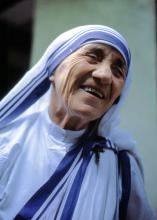
The Vatican has announced that Pope Francis will canonize Mother Teresa in September 2016, according to Gerard O’Connell with America magazine.
Known for her zealous commitment to serving the poor, Teresa of Calcutta’s beatification process was one of the shortest in modern history, and was completed on Oct. 19, 2003, by Pope John Paul II — just six years after she died in 1997.
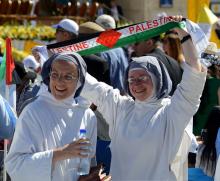
Pope Francis will bestow sainthood on two Palestinian nuns on May 17, a move that’s being seen as giving hope to the conflict-wracked Middle East and shining the spotlight on the plight of Christians in the region.
Sisters Maria Baouardy and Mary Alphonsine Danil Ghattas are due to be canonized by the pontiff along with two other 19th-century nuns, Sister Jeanne Emilie de Villeneuve, from France, and Italian Sister Maria Cristina dell’Immacolata.
The coming canonizations have been described by the Latin patriarch of Jerusalem, Fouad Twal, as a “sign of hope” for the region.
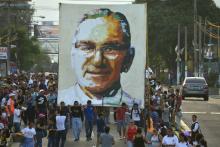
Pope Francis on Feb. 3 officially declared that Archbishop Oscar Romero, assassinated by a right-wing death squad in 1980 while celebrating Mass in El Salvador, was a martyr for the faith, clearing the way for his beatification.
The move ends decades of fierce debate over Romero’s legacy, but it was not a complete surprise: Francis, the first Latin American pope, has often said he thought Romero was a martyr worthy of consideration for sainthood.
But his view contrasts with the conservative papacies of John Paul II and Benedict XVI, which viewed Romero as an icon of the theological left who was killed for political reasons because he spoke out against poverty and human rights abuses.
As a result, Romero’s cause for canonization languished in the Vatican’s bureaucratic limbo despite his great popularity elsewhere.
That is set to change. the Feb. 3 declaration by Francis stated that Romero was “killed in hatred of the faith.” On Feb. 4, the Vatican is scheduled to hold a news conference with Archbishop Vincenzo Paglia, a Vatican official who is promoting Romero’s cause for canonization.
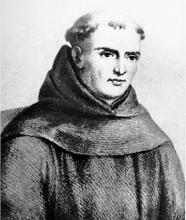
When Pope Francis unexpectedly announced last month that he would canonize the Rev. Junipero Serra during his visit to the U.S. in September, he thrilled the many fans of the legendary 18th-century Spanish Franciscan who spread the Catholic faith across what is now California.
But the pontiff who has decried the “ideological colonization” of the developing world by the secular West is now facing criticism from those who say Serra — called “the Columbus of California” — abused Native Americans and pressured them to convert, aiding in the devastation of the indigenous culture on behalf of the Spanish crown.
“Serra was no saint to us,” Ron Andrade, executive director of the Los Angeles City/County Native American Indian Commission, told the Los Angeles Times.
Some of Serra’s sharpest critics say he was part of an imperial conquest that beat and enslaved Native Americans, raped their women, and destroyed their culture by forcing them to abandon their traditional language, diet, dress and other customs and rites.
Add in the diseases introduced by these Old World invaders, and the original indigenous population of perhaps 300,000 was decimated by as much as 90 percent.
“If (Serra) is elevated to sainthood,” Nicole Lim, the executive director of the California Indian Museum and Cultural Center in Santa Rosa, told The New York Times, “then (Serra) should be held responsible for the brutal and deadly treatment of native people.”
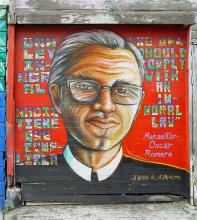
Archbishop Oscar Romero, the hero of the Catholic left who was assassinated in 1980 while celebrating Mass in El Salvador, is inching one step closer to sainthood after his case languished in bureaucratic limbo for decades.
According to the Italian Catholic bishops daily, Avvenire, a panel of theologians at the Congregation for the Causes of Saints has ruled unanimously that Romero should be considered a martyr, or murdered “in odium fidei” (Latin for “hatred of faith”).
The paper reported the ruling was made on Jan. 7. The move is considered a decisive step on Romero’s path to sainthood.
Romero, the archbishop of San Salvador, was shot dead by right-wing death squads while celebrating Mass in March 1980. His murder came a day after he delivered a homily calling for soldiers to lay down their guns and end government repression in the country’s bloody civil war.
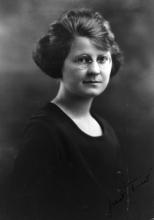
New Jersey is often dismissed as a cultural wasteland of traffic jams and suburban sprawl, mobster graveyards and lost dreams — source material for native son rockers like Bruce Springsteen and Jon Bon Jovi.
But soon the state may also be known as home of the latest American saint, a Bayonne-born nun who is to be beatified in Newark next month.
The beatification of Sister Miriam Teresa Demjanovich, who died in 1927 at the age of 26, puts her one step away from formal canonization.
If Demjanovich does make the final hurdle, she would become just the second person born in the U.S. ever to be named a saint, and it would give New Jersey something to brag about — albeit humbly, no doubt.
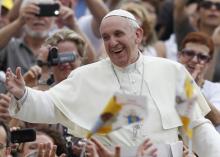
This weekend, more than 800,000 spectators crowded the St. Peter’s Square area while 500,000 more watched on giant screens around Rome as Pope Francis canonized Pope John XXIII and Pope John Paul II. The first time a pope has sainted two popes at the same time, this historic event has been called a savvy political move by the media, since Pope Francis recognized both the more liberal John XXIII and the more conservative John Paul II, thus satisfying two opposing wings of the Roman Catholic church. While Pope Francis did indeed display political savvy at this canonization, this event holds far more significance than that (even leaving aside the spiritual question of discerning sainthood).
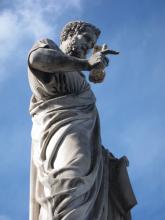
When Pope Francis canonizes Popes John XXIII and John Paul II on Sunday, Catholics across the spectrum will have reason to cheer: Liberals credit John with opening the church to the modern world in the 1960s, and conservatives hail John Paul as reasserting orthodoxy after too many innovations.
But the unprecedented double-barreled canonization also raises a question that might give both sides pause: Why is Rome making saints of almost every modern pontiff after nearly a millennium when almost no popes were canonized?
In the first 500 years of Christianity, the Apostle Peter (considered the first pope by tradition) and 47 of his 48 papal successors were viewed as saints, mainly because so many of them were martyred, which is the simplest route to canonization. Another 30 popes were named saints in the next 500 years, largely based on their reputation for sanctity.